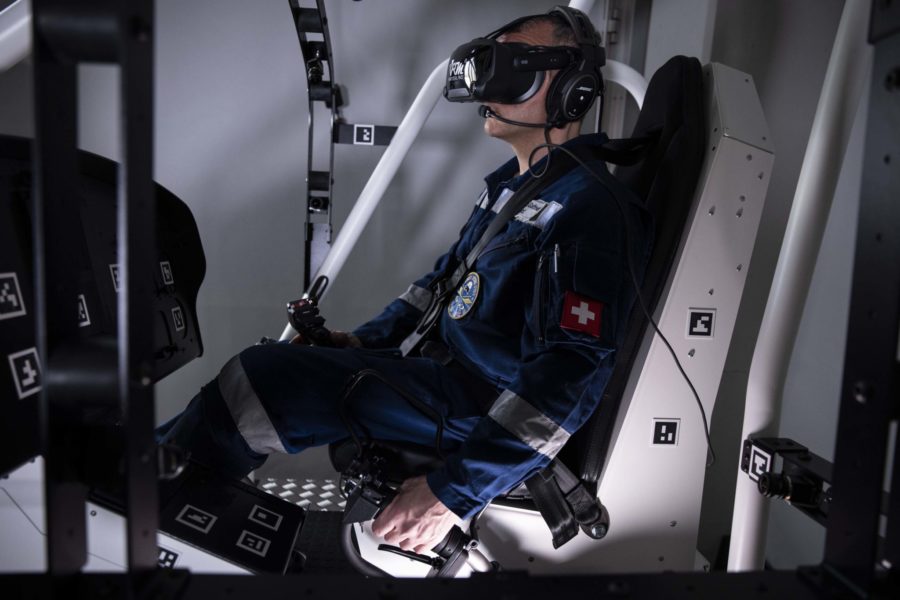
November 18, 2021 – VRM Switzerland, a manufacturer of virtual reality (VR) helicopter simulators, has this week been presenting its latest development, the Airbus H125 training device, at European Rotors, a rotorcraft industry event being held in Cologne, Germany. According to VRM, pilots with type rating (a licensing agency’s certification of an airplane pilot to fly a certain aircraft type) can train on the device immediately without any adaptation time or change to their working strategies.
VRM’s H125 simulator is an electrically driven, high dynamic motion platform that allows pilots to feel as if they are operating a helicopter with precision. The helicopter simulation’s behaviour is based on actual recorded flight data, offering pilots a full-body immersive experience.
The system is developed and built in-house by VRM and enables training sessions for Airbus’ single turbine H125 helicopter, ranging from the familiarisation of the helicopter to demanding scenario-based training such as mountain flying and emergency procedures. The cockpit is fully functional with force feedback controls to simulate hydraulic system failures or other changes of control forces.
Commenting on the H125 simulator, Fabi Riesen, CEO of VRM Switzerland, said: “We have conducted countless iterations and tests with tens of professional helicopter pilots to reach the most realistic simulation level we have ever achieved. Pilots who have tested the simulator with us speak of the enormous potential of this technology for flight training and for improving flight safety.”
Riesen continued, “Ground-level manoeuvers that require a 3D display and high-resolution imagery, such as hovering and slope operations, can be performed just like in the real helicopter. We are proud that for the first time we have type-rated pilots who take-off, hover and land the simulator as precisely as the real H125, with no adaptation time. These maneuvers require perfect tuning of the various parameters and are now possible thanks to our VR technology-based training solution.”
Part of what enables pilots to operate the helicopter simulator with such familiarity is down to VRM’s Pose Tracking System, which allows pilots to see their hands and body movements in the virtual training setting. The pilot’s body is artificially represented in a fully replicated VR cockpit, which allows for natural operation of control elements. The tracking does not require gloves or additional sensors and the full-scale replica cockpit with all relevant controls provides pilots with haptic feedback when operating knobs, buttons and engine control components.
“In our evaluations, we have seen that pilots operate the cockpit elements completely intuitively and with the same speed as in reality; even the avionics touch screen, which is a milestone in the VR industry. It’s impressive to see how hands-on the pilots are in the immersive environment,” stated flight instructor Christoph Ammann.
For more information on VRM Switzerland and its virtual reality solutions for pilot training, please visit the company’s website.
Image credit: VRM Switzerland
About the author
Sam is the Founder and Managing Editor of Auganix. With a background in research and report writing, he has been covering XR industry news for the past seven years.
